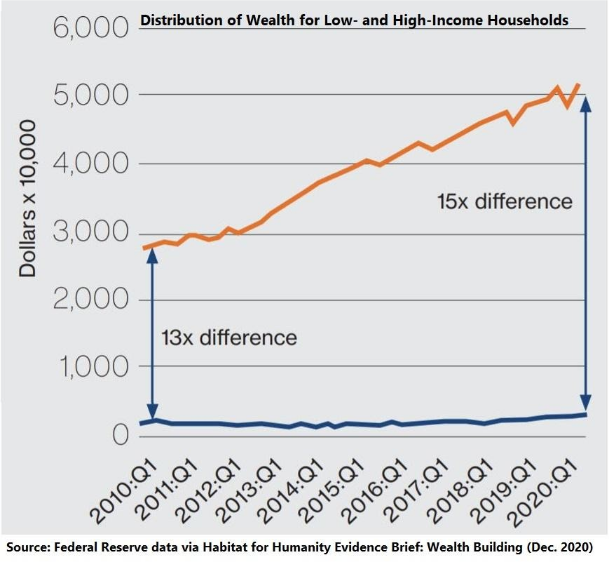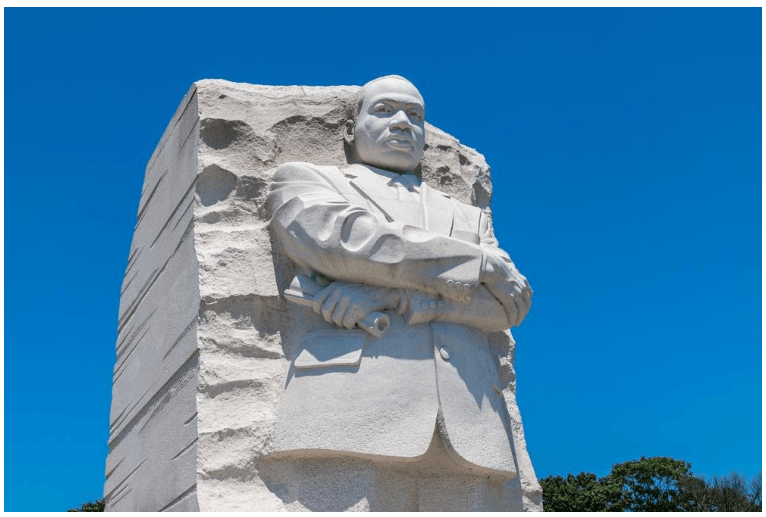If Dr. Martin Luther King Jr. were alive today and preparing to celebrate his 93rd birthday, the civil-rights leader would see a nation with a spotty report card on diversity, equality and inclusion – issues he sought to address until his sudden death in 1968.
It was no coincidence that, only a week after the assassination of Dr. King, Congress passed the Fair Housing Act. Sadly, it took the killing of a great rights advocate to put teeth into the Constitution – including its unalienable rights of life, liberty and the pursuit of happiness – by adding a law that prohibits housing and financial discrimination based on a person’s race, color, religion, sex, national origin, disability or familial status.
And, yet, all these years later Americans of color are still playing catch-up – chasing their dreams, just as Dr. King advocated for them – to enjoy equality in all levels of society. Those goals remain elusive for millions.
Decades of discrimination have placed people of color – particularly Blacks and Hispanics – at a severe disadvantage to their white counterparts. Financial inequities have generated a widening racial wealth gap in this country and it is most present in housing.
There is no denying: Homeownership is the leading form of asset-building in America. The average net worth of a homeowner in the U.S. is $255,000 compared with a renter’s average worth of $6,300, according to 2019 research by the Federal Reserve.
This massive discrepancy appears to be expanding as each generation passes. Children of homeowners benefit from the wealth accumulation of homeownership, as they become owners faster and more frequently – some 25% more often than children of renters. Additionally, families living in low-poverty neighborhoods across America experienced earnings approximately one-third greater than of renters in less affluent areas.
Holding back homeownership through decades of discrimination creates not only inequity between colors and cultures, but it causes the overall economy to suffer. Building equity through homeownership, for example, helps provide more certainty over monthly budgets – thanks to fixed mortgage payments – unlike the unpredictability of renting from month to month. For every dollar in net wealth accumulated by a high-income household, a low-income household can amass only seven cents (source) and this chart shows the gap widening:

Attaining homeownership for anyone is challenging, particularly when there are few affordable options on the market. This for-sale undersupply – known by some as the “missing middle” – declares too few homes are priced at levels attainable to people of lesser means. (This topic has received frequent coverage in my monthly Living the Dream newsletter; sign up here.)
It was with great relief that Washington state lawmakers – led by Gov. Jay Inslee – introduced legislation that this year will attempt to make a dent in affordable-housing shortages. The so-called missing middle housing legislation would legalize and incentivize multi-family housing construction on all residential land located within a half-mile of a major transit stop in our state’s larger cities.
Most local zoning policies prohibit density on single-family lots, making it difficult to build more housing. As communities continue to grow and more people compete for the same limited housing supply, the unaffordability crisis would only worsen without a proactive response from state and local leaders and supported by industry group Washington Realtors®.
As of 2020, only 44% of Black households owned their home compared to 74% of white households. And, in the most recent available data from 2019, just 3% of home sales in King County were purchased by people identified as Black compared with 7% nationally.
Our county is named after Dr. King, a change that took place in 2005 after first being named for William Rufus DeVane King, a U.S. politician and slave owner. The county courthouse in downtown Seattle commemorated the change with a plaque that includes an inscription describing Dr. King as “a man who inspired a nation to strive in a non-violent manner for human rights, civil liberties and economic guarantees rightfully due all people; a man who with fortitude and vision opened doors of opportunity for all to participate fully in the fabric and richness of the American experience.”
Today we continue to strive for justice, peace and reconciliation in this county and in this country – all in an effort to follow the dream of Dr. Martin Luther King Jr.
RELATED STORIES
Seattle’s Connections to Martin Luther King Jr
The Importance of Fair Housing in Our Society and in Seattle
A Call to Erase an Ugly Part of Our Local History and to Move Forward as One




